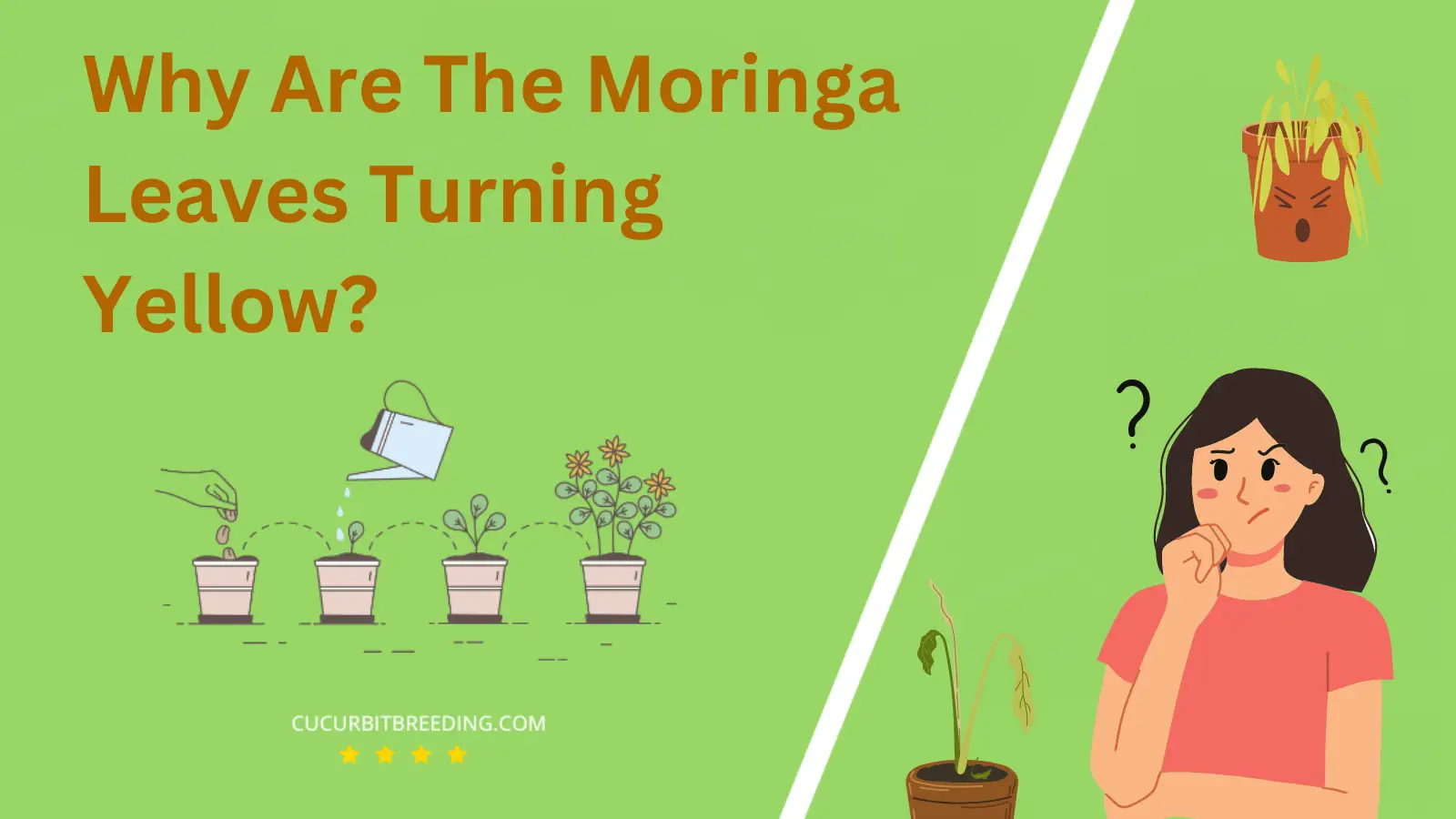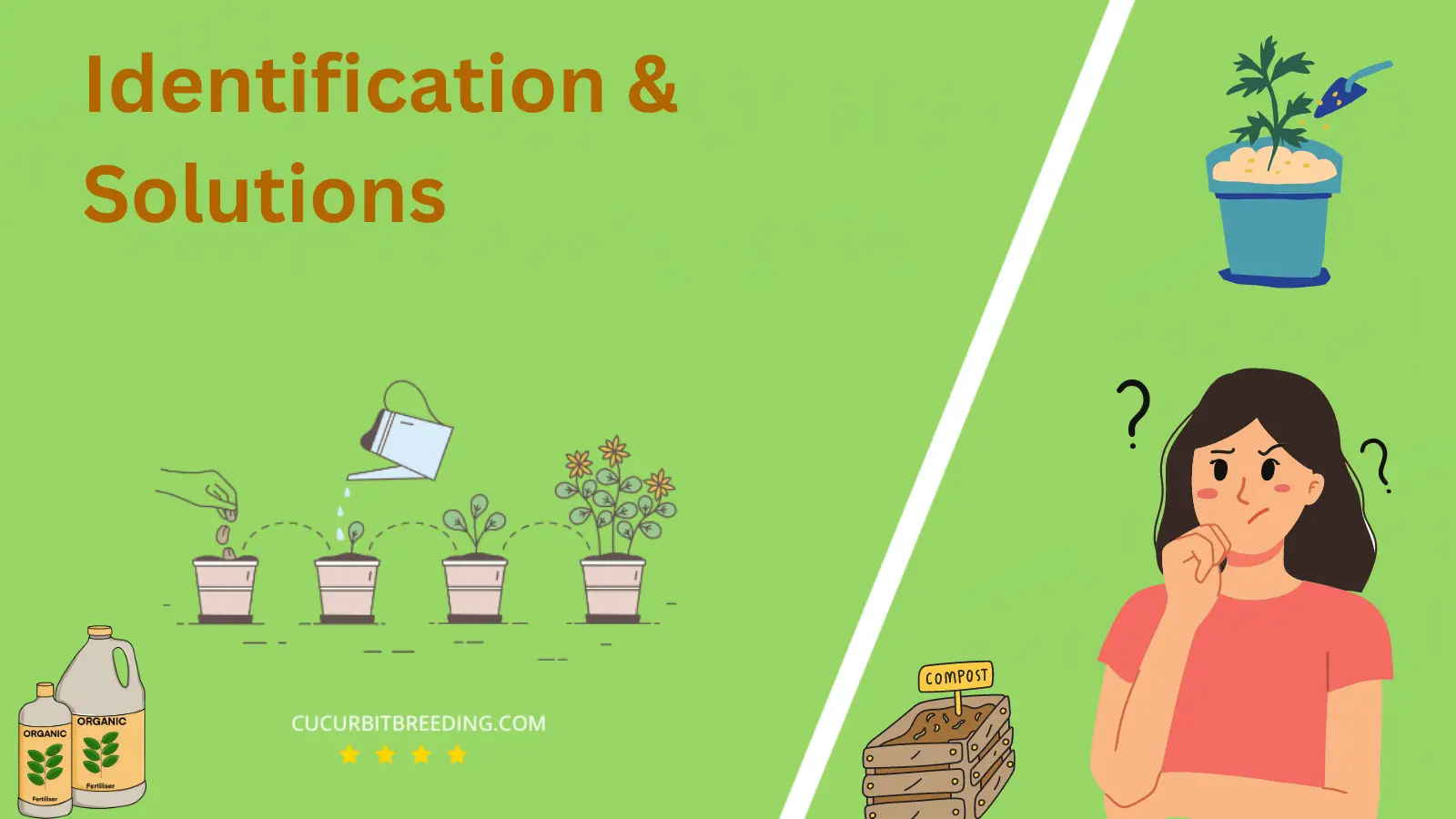
As an avid gardener, nothing can be as alarming as the sight of your precious Moringa leaves turning yellow. It signals a potential crisis that shouldn’t go unchecked. This tree, famously known for its nutritional benefits, now appears to be in trouble.
Many thoughts may be racing through your mind. Is it due to environmental factors? An attack of pests, perhaps? Or something lurking beneath the soil? Hang tight as we delve deeper into this green mystery.
Why Are The Moringa Leaves Turning Yellow?
1. Nutrient deficiencies
| Description | can cause chlorophyll breakdown, leading to yellowing of leaves in plants. |
|---|---|
| Solution | Ensure proper soil nutrition and pH levels to prevent nutrient deficiencies causing yellowing of leaves. |
Moringa leaves turn yellow due to nutrient deficiencies, specifically lack of nitrogen, potassium, or magnesium. When these key nutrients are missing, it can lead to chlorosis, a condition that causes the yellowing of leaves. **Chlorosis** is essentially the plant’s way of communicating it’s not getting enough of what it needs to create chlorophyll, the pigment that gives leaves their green color.
Remedying nutrient deficiency in moringa trees is quite straightforward. The fastest way would be to **add a balanced fertilizer** to the soil regularly. A good choice would be a slow-release granular or water-soluble fertilizer that includes the missing nutrient or nutrients. Be sure to follow the instructions on the package to avoid over- or under-fertilizing.
In addition, **amending the soil** with organic matter such as compost or aged manure can help improve its nutrient content over time. Regular mulching can help retain the nutrients and moisture in the soil, which is also beneficial to the health of your moringa tree. Lastly, regular watering, but avoid waterlogging as it could harm the roots of your moringa tree.
2. Overwatering
| Description | causes root rot, hindering nutrient uptake and leading to chlorophyll breakdown, causing yellowing leaves. |
|---|---|
| Solution | Reduce watering frequency and allow the soil to dry out between waterings to prevent overwatering. |
Overwatering is a common issue that leads to yellowing of moringa leaves. This occurs because excess water can cause the plant’s roots to become oxygen-starved, leading to their weakening and eventual death. As a result, the roots fail to transport essential nutrients to the plant, causing the leaves to discolor and fall off.
To rectify this, you should first regulate your watering schedule. Make sure you’re not soaking the soil – moringa prefers well-drained, loamy soil. Water only when the top inch of the soil is dry. Also, ensure that the pot or garden bed is well-drained to prevent water from stagnating and causing root rot. It could be beneficial to keep the plant in a raised area, as this facilitates draining. If you’re growing your moringa in a pot, choose one with drainage holes.
Note: Proper watering techniques are crucial in maintaining the health of the moringa tree. Always observe the plant’s behavior and adjust your gardening habits according to its needs. Remember, it’s easier to revive an under-watered plant than an overwatered one.
3. Underwatering
| Description | Insufficient water supply disrupts chlorophyll production, leading to yellowing of moringa leaves. |
|---|---|
| Solution | Increase watering frequency to provide adequate hydration for the plant’s physiological processes and growth. |
Moringa leaves turn yellow due to underwatering because it leaves the plant stressed and unable to function properly. Underwatering results in the plant not getting enough necessary nutrients and moisture, leading to discolored leaves. This can also decrease the plant’s disease resistance.
To correct this issue, start by providing the plant with a consistent watering routine. Ensure the soil is well-draining to prevent root damage and water as needed, making sure the top inch of soil dries out before watering again. By improving water management practices, you can mitigate the damage caused by underwatering.
In addition, use a water-soluble balanced plant fertilizer to replenish any nutrients the plant may be lacking. This would help to restrengthen the plant, increasing its resistance to diseases, pests, and unfavorable conditions. Lastly, remember to monitor its environment to ensure it is getting the right amount of light and temperature, as underwatering may not be the only reason for the yellowing of moringa leaves.
Note: Always ensure to strike a balance while watering. Both overwatering and watering can harm your moringa plant.
4. Pest infestation
| Description | Insufficient water supply disrupts chlorophyll production, leading to yellowing of moringa leaves. |
|---|---|
| Solution | Increase watering frequency to provide adequate hydration for the plant’s physiological processes and growth. |
When a pest infestation occurs, it negatively affects the moringa plant’s overall health, often resulting in the yellowing of leaves. Pests such as aphids, beetles, and caterpillars can suck out the vital nutrients from the plant, causing its leaves to turn yellow due to lack of essential elements for photosynthesis and growth.
The most effective solution for pest infestation is to introduce natural predators of these pests into the environment, such as ladybugs and spiders. These predators can naturally control the pest population, reducing their harmful effects on the moringa plant.
Additionally, you might also consider using organic pesticides. These are safer for the environment and less toxic to the plant, effectively helping to control the pest population. Just make sure to follow the application instructions carefully to prevent overuse, which could cause additional problems for the plant.
Regular inspection of your plants can also help to catch any signs of pest infestation early on. This way, you can take immediate action before the situation worsens, and prevent the leaves from turning yellow.

5. Exposure to extreme temperatures
| Description | Increase watering frequency to provide adequate hydration for the plant’s physiological processes and growth. |
|---|---|
| Solution | Provide shade or move to a more suitable location to avoid extreme temperature exposure. |
Exposure to extreme temperatures can cause Moringa leaves to turn yellow. Extreme heat or cold stresses the plant, affecting its chlorophyll production. This stress disrupts the photosynthesis process, leading to discoloration, specifically turning the leaves yellow. Even though Moringa trees can withstand warm climates, they are not immune to adverse conditions present in harsh summer or winter environments.
As for solutions, aim to stabilize the plant’s environment. Gradual acclimatization is key if temperature changes can’t be avoided. Move your Moringa plant slowly into its new location to help it adjust to any temperature differences. However, if your plant is outdoors and there’s imminent extreme weather, consider erecting a shelter, like a shade cloth for high heat, or a cover for frosty conditions. In addition, monitor the water levels in extreme temperatures; too much or too little water can further stress the plant. Regular and balanced watering according to the climate and soil conditions is important.
6. Soil pH imbalance
| Description | can disrupt nutrient uptake in plants, leading to chlorosis and yellowing of the leaves. |
|---|---|
| Solution | Adjust soil pH with appropriate amendments and monitor nutrient levels to restore leaf color. |
Moringa leaves turning yellow can be a result of soil pH imbalance. Moringa trees prefer a slightly acidic to neutral pH (between 6 and 7). An imbalance in pH can affect the availability of nutrients needed for the plant to thrive and maintain its green foliage.
Such and imbalance can create a deficiency or excess of certain minerals. For example, when soil is too alkaline (with high pH), it may hinder the absorption of iron, causing chlorosis, a common plant condition that turns leaves yellow. Similarly, if it’s too acidic (low pH), the plant may also struggle with nutrient absorption, leading to yellowing leaves.
To fix the issue of yellowing leaves caused by soil pH imbalance, regular soil testing is essential. This can help to identify the specific imbalances and allow you to make necessary adjustments. If the soil is too acidic, you can add lime to increase the pH. On the other hand, if it’s too alkaline, adding sulfur, compost, or organic matter can help to lower the pH.
However, use these amendments carefully and as guided. Overcorrection might worsen the problem. Moreover, consider proper watering practices as over-watering can also disrupt soil pH. Overall, proper maintenance, regular checks and balance of the soil pH can prevent the Moringa leaves from turning yellow due to this reason.
7. Disease or fungal infection
| Description | Disease or fungal infection disrupts chlorophyll production, causing leaves to turn yellow. |
|---|---|
| Solution | Apply fungicide and remove infected leaves to prevent further spread of disease. |
Moringa leaves turning yellow can be directly linked to the issue of overwatering. When there’s an excess of water, the roots become waterlogged and oxygen starved. Certain vital processes that require oxygen get halted, causing the leaves to turn yellow. Symptoms often start at the lower leaves before moving up the tree.
To counteract this issue, ensure the plant isn’t sitting in water, improve drainage around the plant’s roots, and refrain from watering until the top inch of soil has dried out. Keeping an eye on the water level in your soil can prevent root rot, a common cause of yellowing leaves due to overwatering.